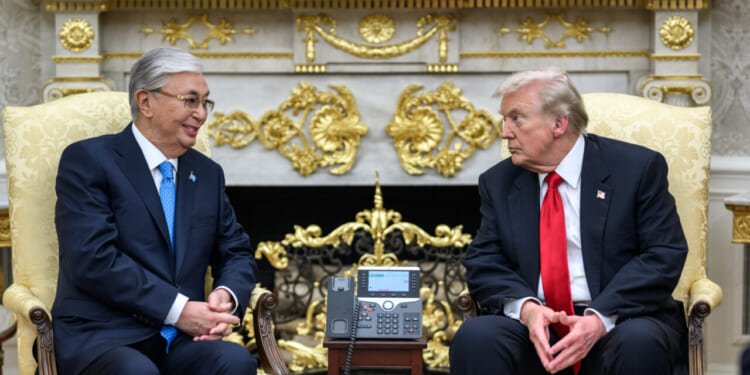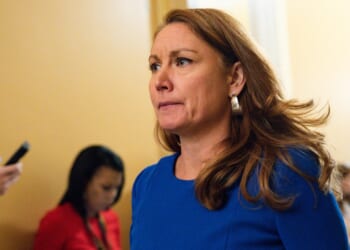This year’s Central Asia summit brought US regional policy away from rhetoric and toward implementation.
When President Donald Trump welcomed the leaders of the five Central Asian nations to Washington on November 6 for the US-Central Asia (C5+1) Summit, not many expected tangible outcomes beyond the usual diplomatic reaffirmations. For decades, American administrations promised to “re-engage” with Central Asia, yet such rhetoric rarely translated into meaningful action. This time, however, was different.
The substance was visible in the unprecedented volume of agreements signed and the pragmatic tone of discussions. Kazakhstan, the largest economy in Central Asia and a key energy and uranium supplier, signed deals worth approximately $17 billion, spanning energy, critical minerals, digitalization, aviation, and education. These represent a measurable upgrading of US engagement in a region long regarded as Russia’s and China’s strategic backyard.
Kazakhstan’s Accession to the Abraham Accords
Diplomatically, the biggest headline was Kazakhstan’s announcement that it would join the Abraham Accords, the US-brokered framework aimed at normalizing relations between Israel and the Arab world. Kazakhstan already enjoys strong relations with Israel, as well as close ties with the Muslim world and Gulf states. By joining the accords, Astana aims to strengthen its reputation as a bridge-builder—one that can credibly speak to both sides of longstanding divides.
Kazakhstan’s decision is based on a strategic calculus. The country’s leadership has long positioned itself as a neutral platform for dialogue. In 2024, it hosted Azerbaijani and Armenian peace talks in Almaty, continuing its tradition of quiet mediation that began with the Astana Process on Syria. Joining the accords, therefore, serves multiple purposes: it pleases Washington, deepens ties with the Middle East, and strengthens Kazakhstan’s role as a pragmatic mediator in an increasingly polarized world.
For the United States, this diplomatic win highlights a broader success. While earlier American engagement in Central Asia often centered on counterterrorism and broader security, the current approach—anchored in tangible economic cooperation and respect for regional autonomy—appears more durable.
Concrete Gains for US Central Asia Policy
For the United States, the C5+1 Summit yielded real, measurable outcomes—the most significant of which lie in critical minerals and energy. Washington and Astana signed a landmark memorandum on cooperation in rare earths, tungsten, copper, and uranium, resources essential for advanced manufacturing and clean technology. Kazakhstan already supplies nearly 25 percent of US uranium imports, making it an important player in America’s energy security and nuclear fuel supply chain.
The same pragmatic logic applies to connectivity. With 80 percent of overland cargo between China and Europe already passing through Kazakhstan, the country is a central hub to the Trans-Caspian International Transport Route, also known as the Middle Corridor. US participation in financing or facilitating this route would reduce dependence on Russia-centered networks, help stabilize regional logistics, and open new trade arteries linking Central Asia to global markets.
This approach—building influence through infrastructure, minerals, and digital ties rather than military footprints—represents a recalibration of US policy. The United States is no longer trying to “outflank” Russia or China. Instead, it is embedding itself through mutually beneficial, bankable cooperation.
Kazakhstan’s multi-vector diplomacy remains its greatest asset. It is one of the few countries that can engage Washington, Moscow, Beijing, and now Tel Aviv and Riyadh without alienating any of them. As the United States and China seek to stabilize their relationship, Kazakhstan could again serve as a bridge between East and West, offering practical channels for technology, trade, and energy cooperation that bypass the framework of great-power rivalry.
Washington needs to recognize and respect this balanced foreign policy, which seems to be the case, judging by the summit’s outcomes. There was no pressure on Central Asian states to take sides; instead, the emphasis was on economic deals, energy transition, and digital cooperation—areas that reinforce independence rather than dependence.
The success of the summit, however, will only matter if it leads to follow-through. History offers plenty of examples of US initiatives in Eurasia that began with optimism and faded into neglect. To prevent that cycle from repeating, three practical steps should be taken.
First, Washington should remain financially committed to the critical minerals sector in Central Asia, ensuring that agreements translate into real investment. By supporting exploration, processing, and technology transfer, the United States can both secure supply chains and strengthen Central Asia’s own industrial base.
Second, the United States should help accelerate the development of the Middle Corridor, not only as a geopolitical instrument, but also as a commercial route that links Central Asia to global markets. This involves investing in logistics, customs modernization, and port infrastructure along the Caspian route, thereby facilitating the movement of minerals, manufactured goods, and agricultural products.
Third, to solidify America’s presence, President Trump should consider visiting Central Asia before the end of his term. A presidential visit, including a regional C5+1 gathering, would signal to the region’s powerful neighbors that the United States intends to remain engaged for the long term. Symbolism matters in geopolitics, and such a move would complement the economic substance now taking shape.
A New Phase of US Engagement with Central Asia
The 2025 summit did not upend the regional balance of power, nor did it seek to. It did something more durable: it shifted US engagement from abstraction to implementation. For once, the focus was on realistic, mutually beneficial projects rather than grand strategic narratives.
In Russia and China’s backyard, small, bankable wins, including in critical minerals, AI infrastructure, energy, and logistics, are more effective than sweeping promises or security commitments that risk overreach. The United States has now found a formula that Central Asia can accept and benefit from.
If that momentum is sustained, this year’s C5+1 Summit may come to be seen as the moment Washington’s presence in Central Asia finally matured from well-meaning rhetoric to strategic realism, helping the United States to anchor its interests in a region that is no longer peripheral.
About the Author: Michael Rossi
Michael Rossi is a lecturer in the Department of Political Science at Rutgers University in New Brunswick, New Jersey. Currently, he is a visiting professor in the Department of International Relations at Webster University, Tashkent, Uzbekistan.
Image: White House / Wikimedia Commons / Public Domain.

















